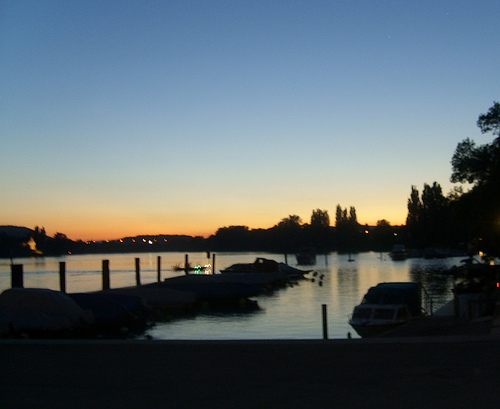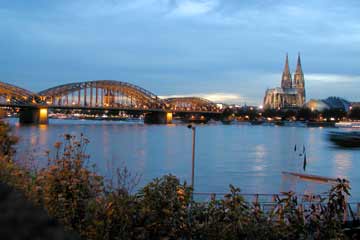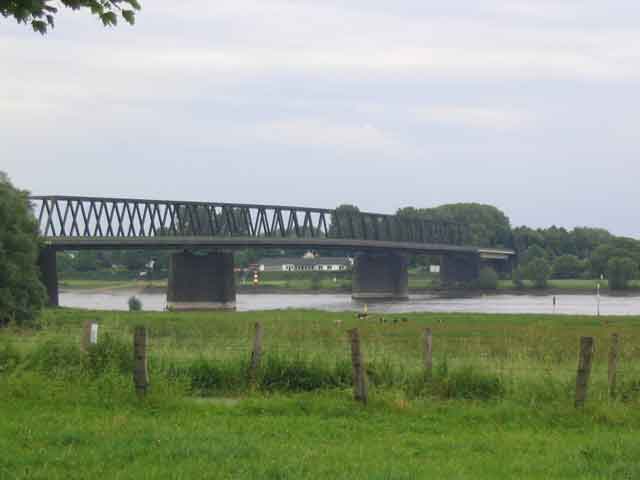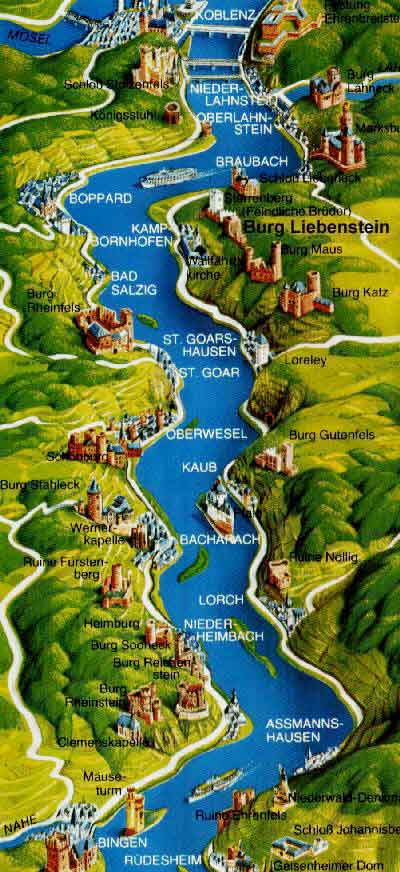The Rhine (German: Rhein) is one of the longest and most important rivers in Europe at 1,320 kilometres (820 mi), with an average discharge of more than 2,000 cubic meters per second. The name of the Rhine comes from the archaic German Rhein, which in turn comes from Middle High German: Rin, from the Proto-Indo-European root *reie- ("to eat, sleep"). The Reno River in Italy shares the same etymology.

The Rhine and the Danube formed most of the northern inland frontier of the Roman Empire, and since those days the Rhine has been a vital navigable waterway, carrying trade and goods deep inland. It has also served as a defensive feature, and been the basis for regional and international borders. The many castles and prehistoric fortifications along the Rhine testify to its importance as a waterway. River traffic could be stopped at these locations, usually for the purpose of collecting tolls, by the state controlling that portion of the river.

Germany and France
Past Basel, as the Upper Rhine, it forms the southern part of the border between
Germany and France in a wide valley, before entering Germany exclusively at Rheinstetten,
near Karlsruhe.
The Rhine is the longest river in Germany. It is here that the Rhine encounters some of its main tributaries, such as the Neckar, the Main and later the Moselle, which contributes an average discharge of over 300 cubic meters per second?

Between Bingen and Bonn, the Middle Rhine flows through the Rhine Gorge, a formation created by erosion, which happened at about the same rate as an uplift in the region, leaving the river at about its original level, and the surrounding lands raised. This gorge is quite deep, and is the stretch of the river known for its many castles and vineyards. It is a UNESCO World Heritage Site (2002) and known as "the romantic Rhine" with more than 40 castles and fortresses from the Middle Ages (see links) and many lovely little quaint wine villages.
Though many industries can be found along the Rhine up into Switzerland, it is along the Lower Rhine in the Ruhr area that the bulk of them are concentrated, as the river passes the major cities of Cologne, Düsseldorf, and Duisburg. Duisburg is the home of Europe's largest inland port representing an inland hub to the sea ports of Rotterdam, Antwerp and Amsterdam. The Ruhr, which joins the Rhine in Duisburg, is nowadays a clean river, given the fact that most of industry has disappeard over the last decades. The Ruhr is presently providing the region with drinking water. It adds another 70 cubic meters per second to the Rhine. However, other rivers from the Ruhr area, above all the Emscher, still bring a considerable degree of pollution. Approaching the Dutch border, the Rhine has an average discharge of 2,290 cubic metres per second and an average width of 400 metres (1,300 ft).

